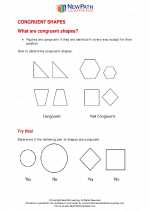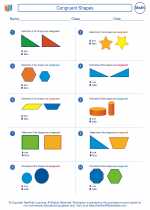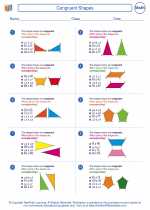Reflexive Property
The reflexive property is a fundamental property in mathematics that states that any quantity is equal to itself. In mathematical terms, for any real number a, the reflexive property can be expressed as a = a.
Understanding the Reflexive Property
To understand the reflexive property, it's important to recognize that when a quantity is compared to itself, it will always be equal to itself. This property is true for all real numbers and is a fundamental concept in algebra and arithmetic.
Example:
For example, if we have the number 5, the reflexive property states that 5 is equal to itself: 5 = 5.
Study Guide for Reflexive Property
- Definition: The reflexive property states that any quantity is equal to itself.
- Notation: In mathematical terms, for any real number a, the reflexive property can be expressed as a = a.
- Application: The reflexive property is used in various algebraic and arithmetic operations to show that a quantity is equal to itself, which is a fundamental concept in mathematics.
- Examples: Practice using the reflexive property with different numbers and algebraic expressions to reinforce the concept.
- Real-World Connections: Discuss real-world examples where the reflexive property applies, such as measurements of length, weight, or time.
Understanding the reflexive property is essential for building a strong foundation in mathematics and is a key concept in algebraic equations and expressions.
.◂Math Worksheets and Study Guides Fifth Grade. Congruent Shapes
Study Guide Congruent Shapes
Congruent Shapes  Worksheet/Answer key
Worksheet/Answer key Congruent Shapes
Congruent Shapes  Worksheet/Answer key
Worksheet/Answer key Congruent Shapes
Congruent Shapes  Worksheet/Answer key
Worksheet/Answer key Congruent Shapes
Congruent Shapes 

 Worksheet/Answer key
Worksheet/Answer key
 Worksheet/Answer key
Worksheet/Answer key
 Worksheet/Answer key
Worksheet/Answer key

The resources above cover the following skills:
Geometry (NCTM)
Analyze characteristics and properties of two- and three-dimensional geometric shapes and develop mathematical arguments about geometric relationships.
Identify, compare, and analyze attributes of two- and three-dimensional shapes and develop vocabulary to describe the attributes.
Explore congruence and similarity.